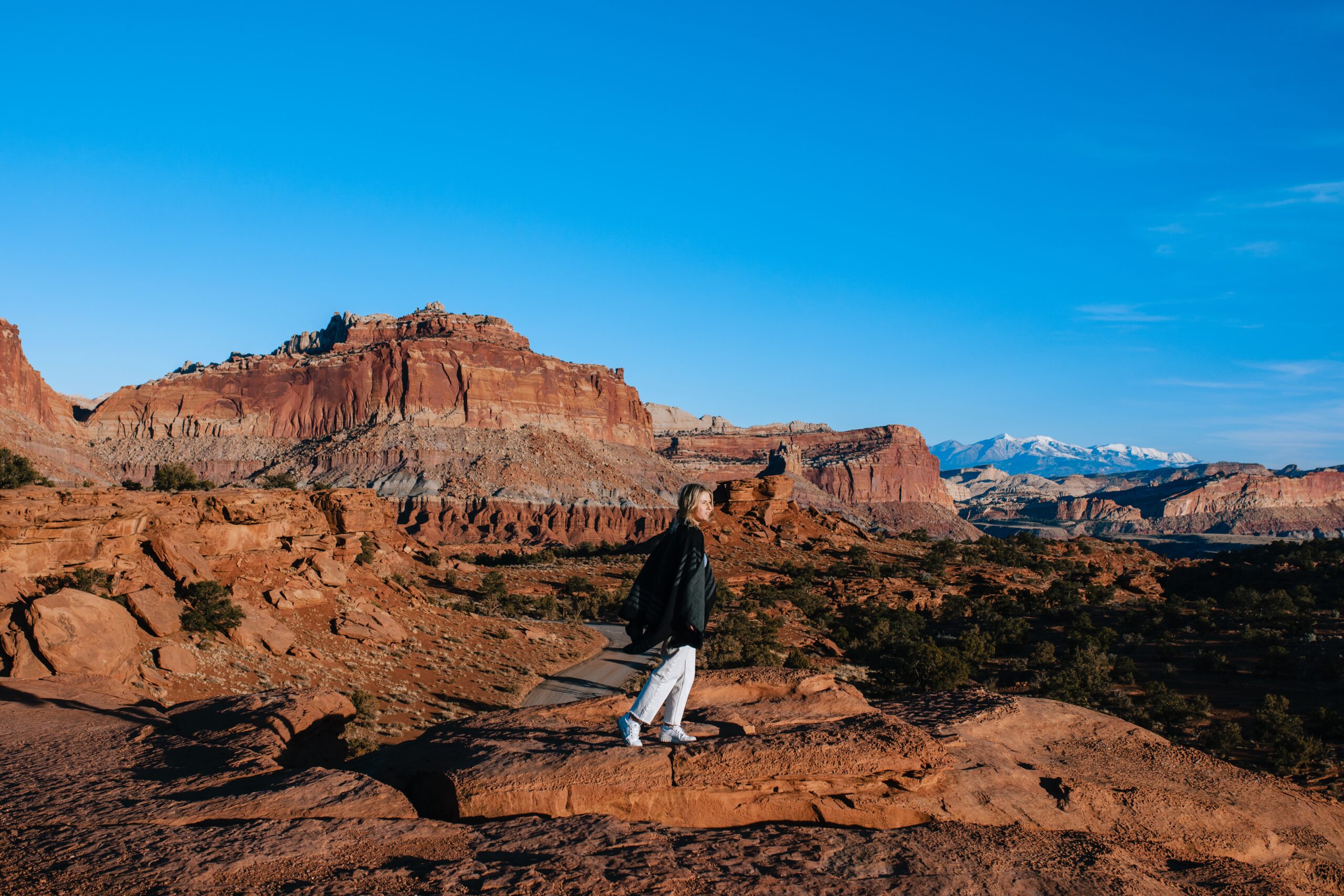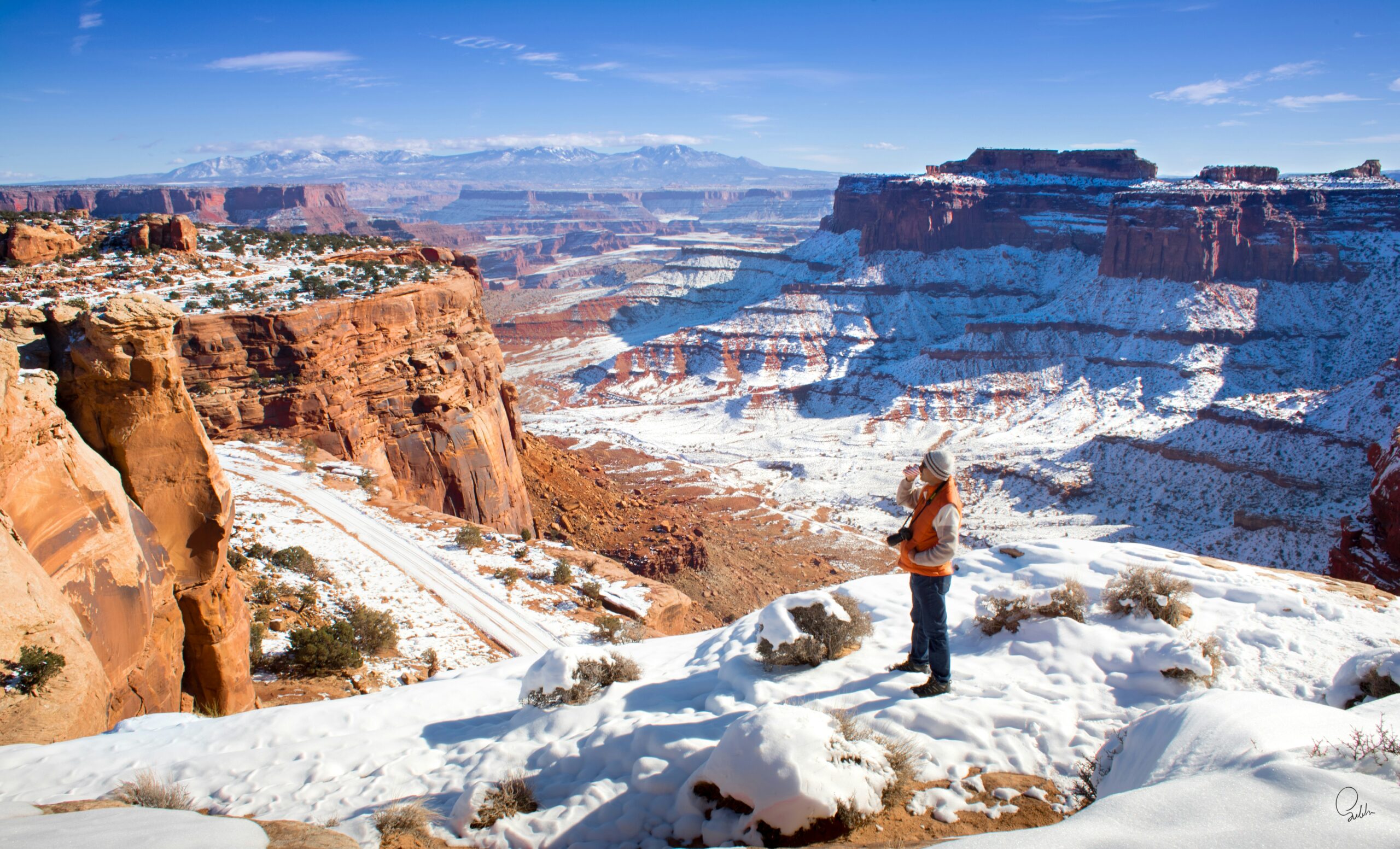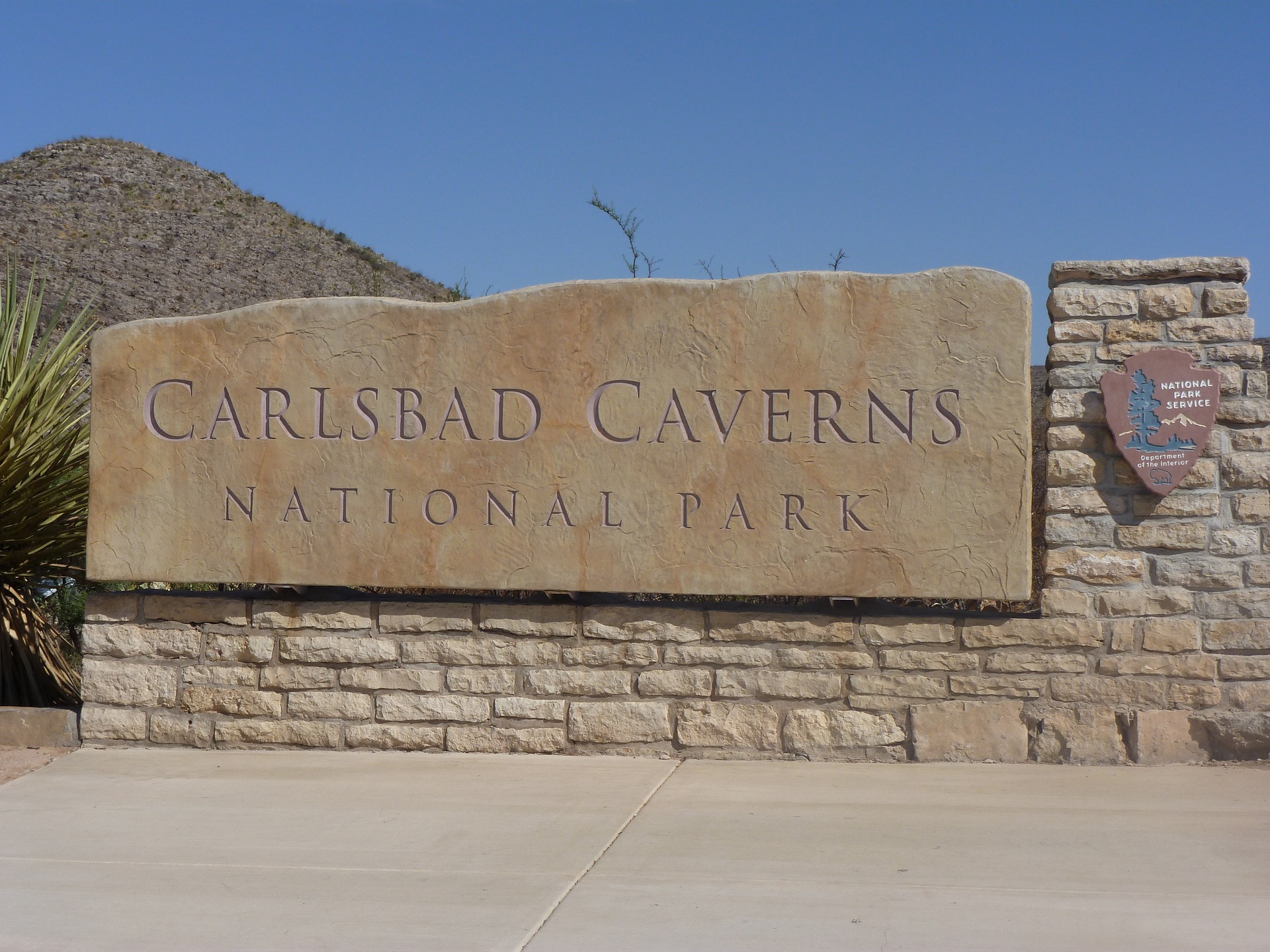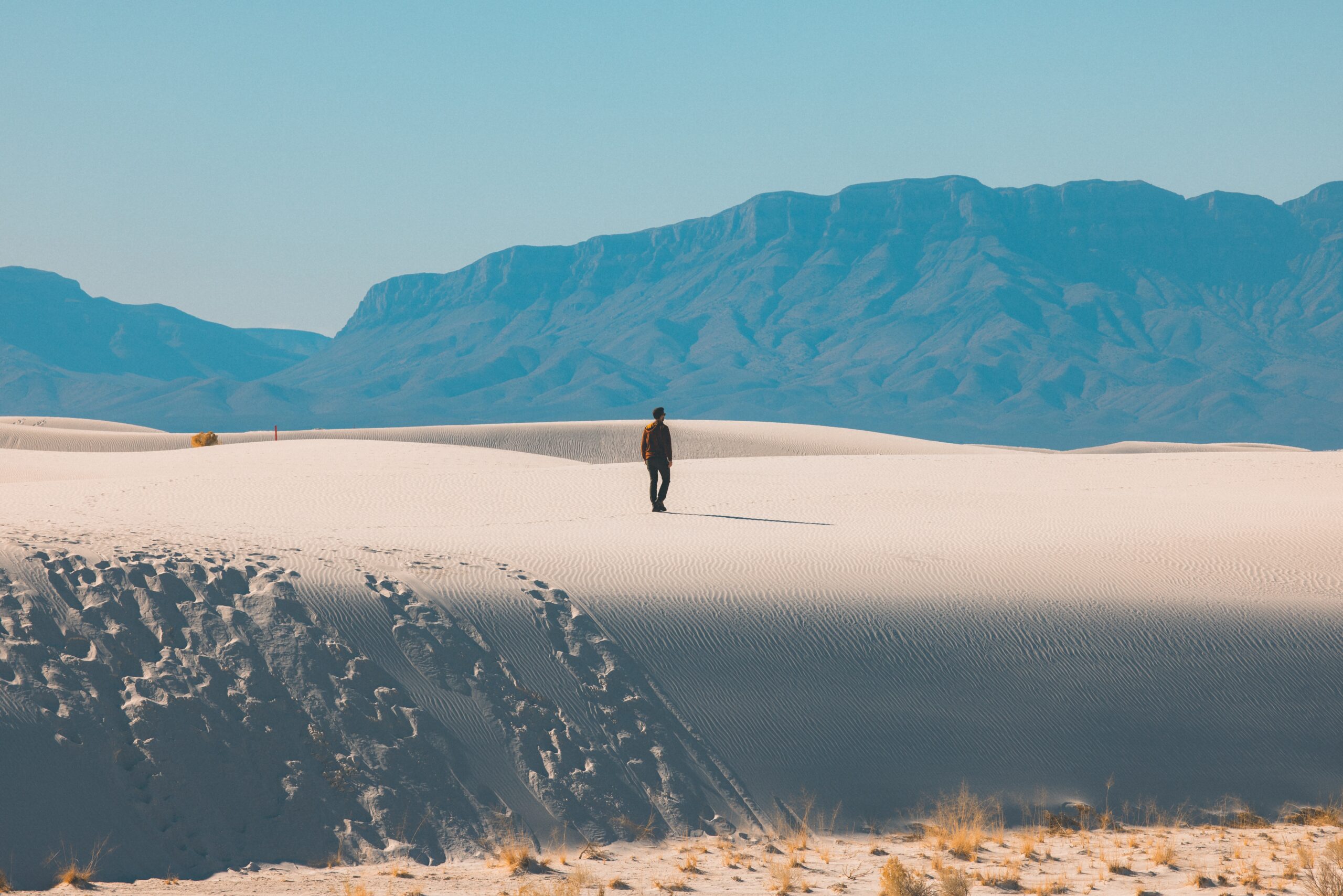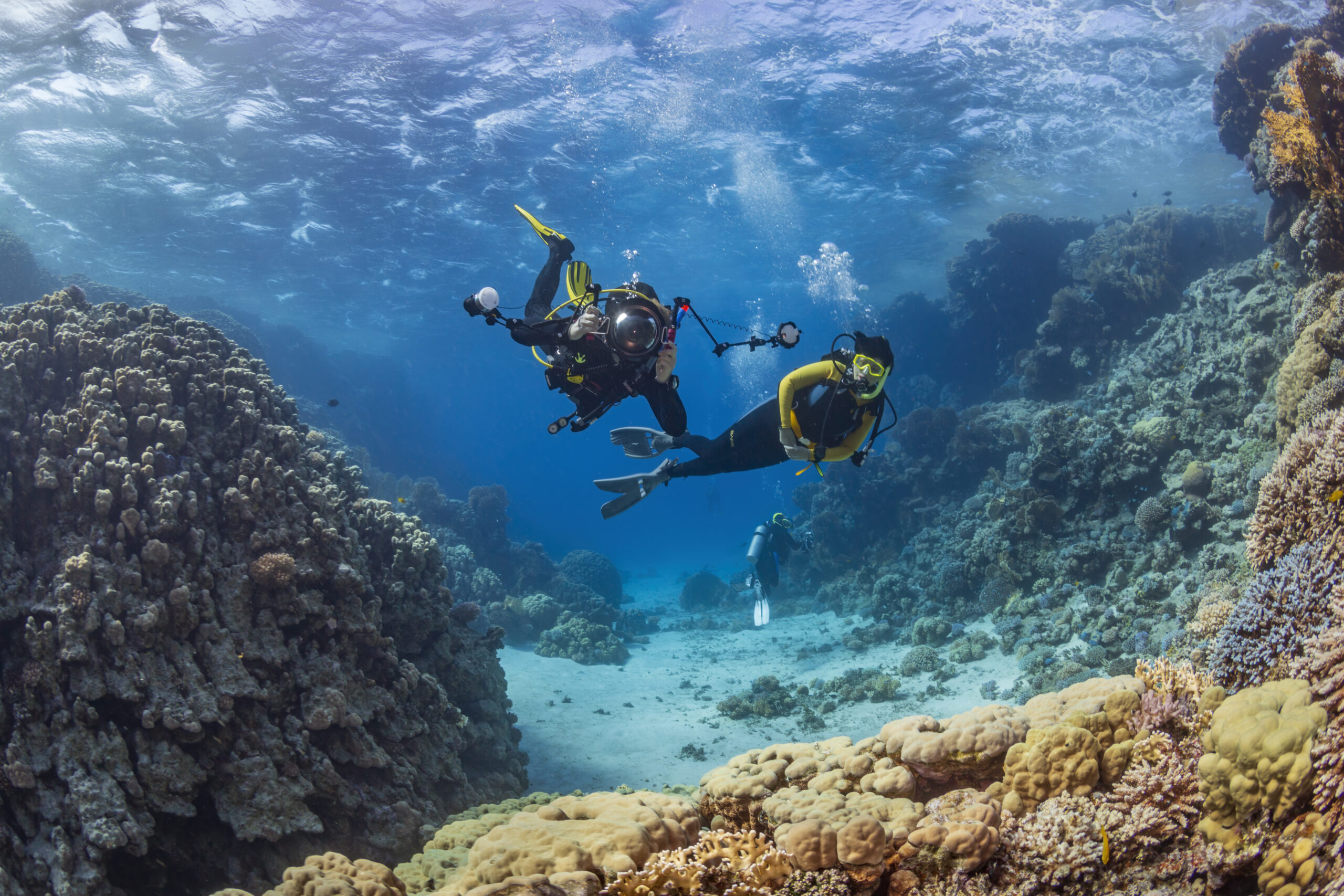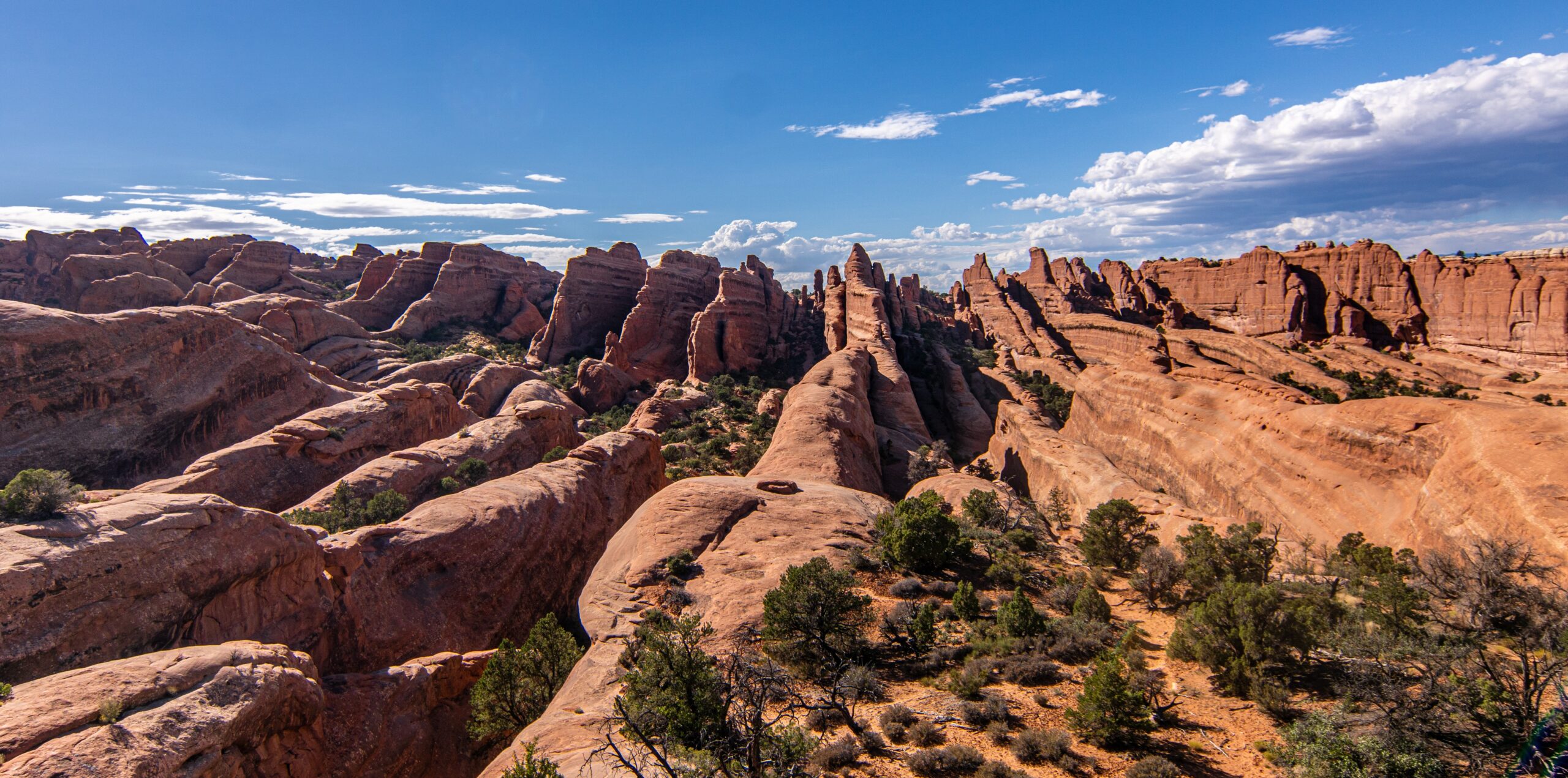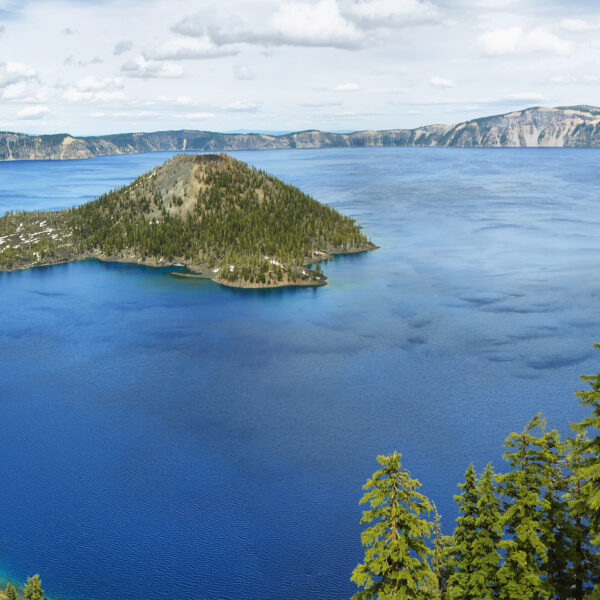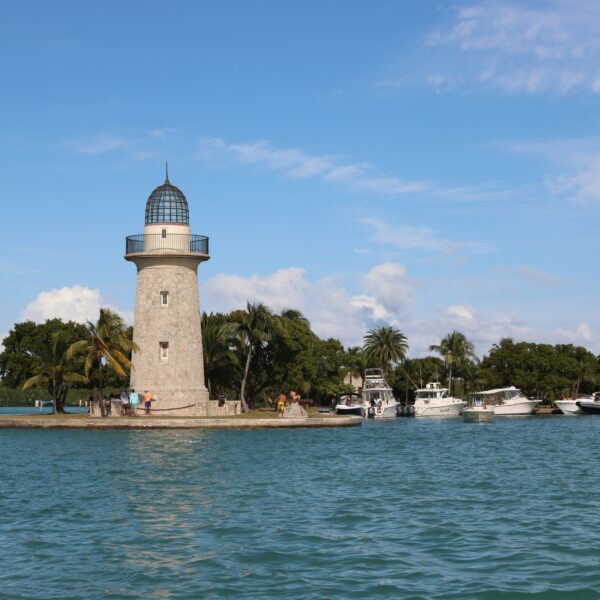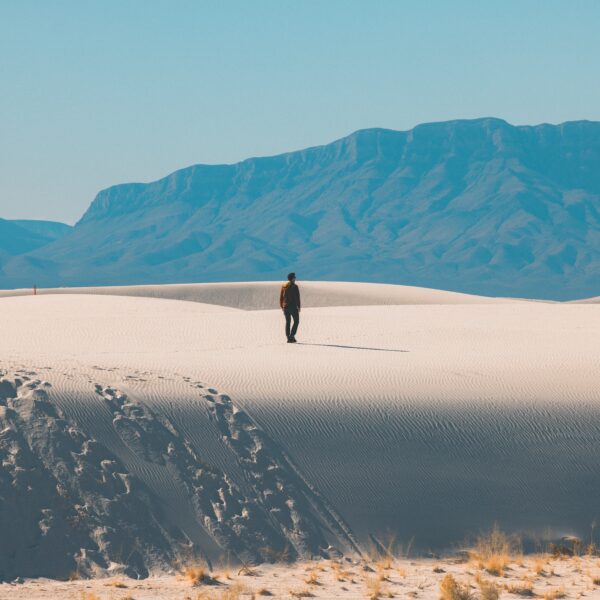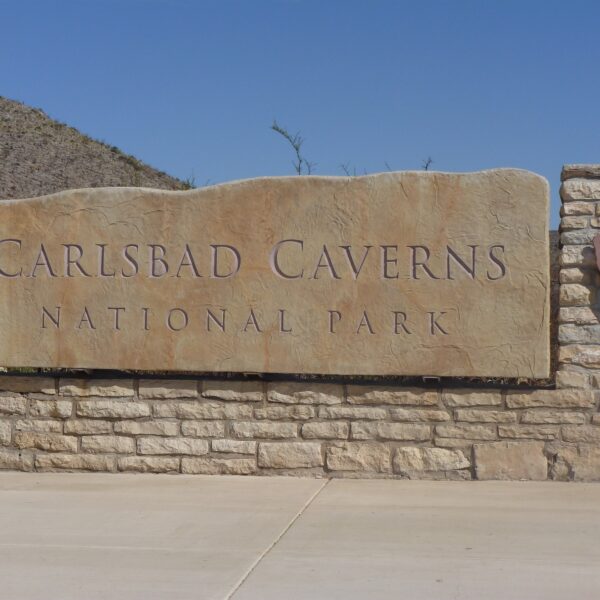As the summer crowds disperse and nature’s vibrant palette transforms the landscape, Capitol Reef National Park takes on a whole new allure in the fall. From crimson canyons to golden orchards, this lesser-known Utah gem offers a captivating escape for autumn adventurers. In this guide, we’ll unveil the seasonal delights awaiting you at Capitol Reef, from the best hikes to the ideal times for capturing fall foliage.
Some posts on this site contain affiliate links, meaning if you book or buy something through one of these links, I may earn a small commission at no extra cost to you.
The Fall Foliage Spectacle: A Riot of Colors
Fall is the season of change, and Capitol Reef embodies this transformation with its stunning display of fall foliage. The park’s diverse plant life, including cottonwoods and maples, erupts into shades of red, orange, and gold. Discover where to witness this natural spectacle and when the colors are at their peak.
Weather & Timing: Planning Your Visit
When planning your fall adventure to Capitol Reef National Park, understanding the weather patterns and the ideal timing is crucial for a comfortable and enjoyable experience. Fall in Capitol Reef brings a relief from the scorching summer heat, but it still offers diverse conditions to consider.
Fall Temperature Ranges: As you step into Capitol Reef during autumn, you’ll encounter a wide range of temperatures. Daytime highs can still reach pleasantly warm levels, often hovering around 70 to 80 degrees Fahrenheit (21-27°C). However, once the sun dips below the horizon, the desert’s nighttime chill sets in, causing temperatures to drop significantly. Expect nighttime lows ranging from 40 to 50 degrees Fahrenheit (4-10°C) in the lower elevations. In the higher terrain, temperatures can dip even further, occasionally reaching near or below freezing.
Precipitation Patterns: Fall in Capitol Reef is characterized by relatively low precipitation levels, especially when compared to the winter and spring months. While occasional rain showers or passing storms are possible, they’re typically short-lived and add a touch of drama to the landscape. Snow is a rare sight in the fall, with any accumulations usually occurring in the park’s higher elevations.
Ideal Months to Visit: To experience the full splendor of Capitol Reef’s fall foliage and enjoy comfortable temperatures, plan your visit between late September and early November. During this window, you’ll witness the park’s vibrant transformation as the leaves change colors, and temperatures are generally mild. September provides a taste of early fall, while October is often considered the peak month for fall foliage. By November, the park begins its gradual shift toward winter, with cooler temperatures and fewer crowds.
Crisp, Clear Days: Fall in Capitol Reef is renowned for its clear, sunny days. With fewer clouds in the sky compared to other seasons, you can expect excellent visibility, perfect for capturing the park’s stunning landscapes with your camera or simply enjoying the breathtaking views.
Best Hikes for Fall: Trails Alive with Color
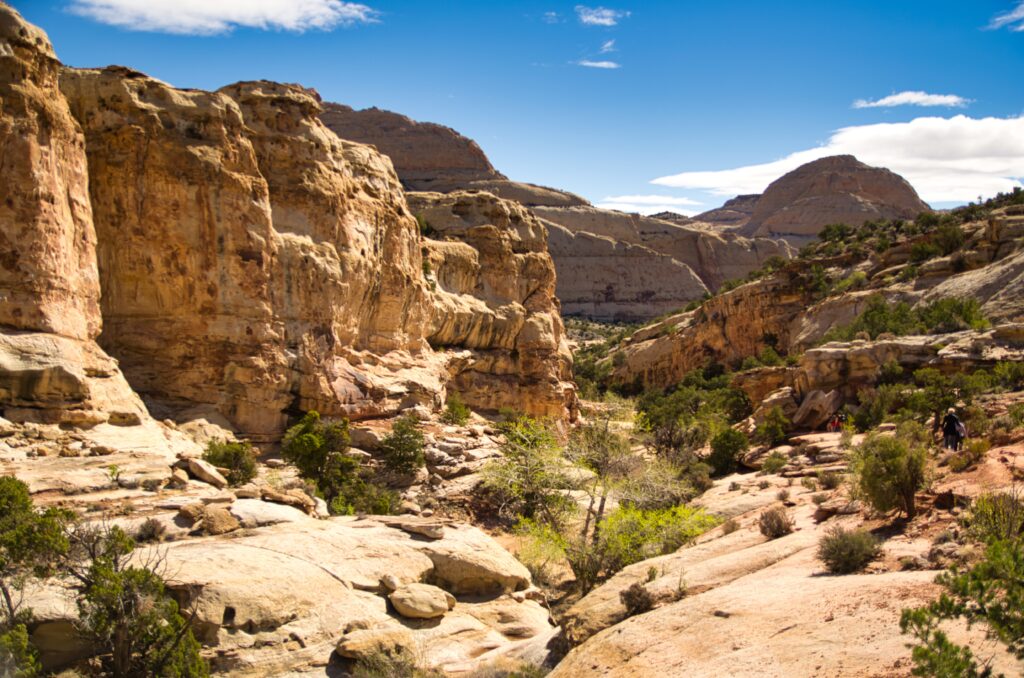
Exploring Capitol Reef National Park in the fall is a hiker’s dream come true. The park’s diverse landscape, from towering red rock formations to lush riparian areas, becomes a canvas painted with the vibrant hues of autumn. Here are some of the best hikes to embark on during this enchanting season:
Hickman Bridge Trail: One of Capitol Reef’s most iconic hikes, Hickman Bridge Trail, becomes even more enchanting in the fall. This moderate 2-mile round trip takes you through a picturesque canyon, where you’ll be surrounded by golden cottonwoods and the fiery reds of the rock formations. As you reach the namesake natural bridge, the contrast of the rich foliage against the warm sandstone is a sight to behold.
Fremont Gorge Overlook Trail: For a panoramic experience, the Fremont Gorge Overlook Trail is a fantastic choice. This 1.2-mile round trip showcases the park’s canyons, cliffs, and the meandering Fremont River. In the fall, the overlook provides an exceptional vantage point to capture the mosaic of colors below.
Chimney Rock Trail: This short but exhilarating trail rewards you with breathtaking views of the Waterpocket Fold, Capitol Reef’s most prominent geological feature. The hike, approximately 3 miles round trip, offers an intimate experience with the fall foliage, making it a favorite among photographers.
Cohab Canyon Trail: If you’re looking for solitude and a more immersive encounter with fall’s transformation, the Cohab Canyon Trail is a hidden gem. At just under 2 miles round trip, this moderately challenging hike takes you through a narrow, colorful canyon where you’ll find yourself surrounded by the golden glow of cottonwoods.
Cassidy Arch Trail: Named after the famous outlaw Butch Cassidy, this 3.4-mile round-trip hike takes you to an impressive natural arch. The trail weaves through a canyon filled with trees showcasing their autumn best. As you approach the arch, you’ll be greeted with breathtaking vistas that seem to stretch on forever.
Hidden Gems: Beyond the Foliage
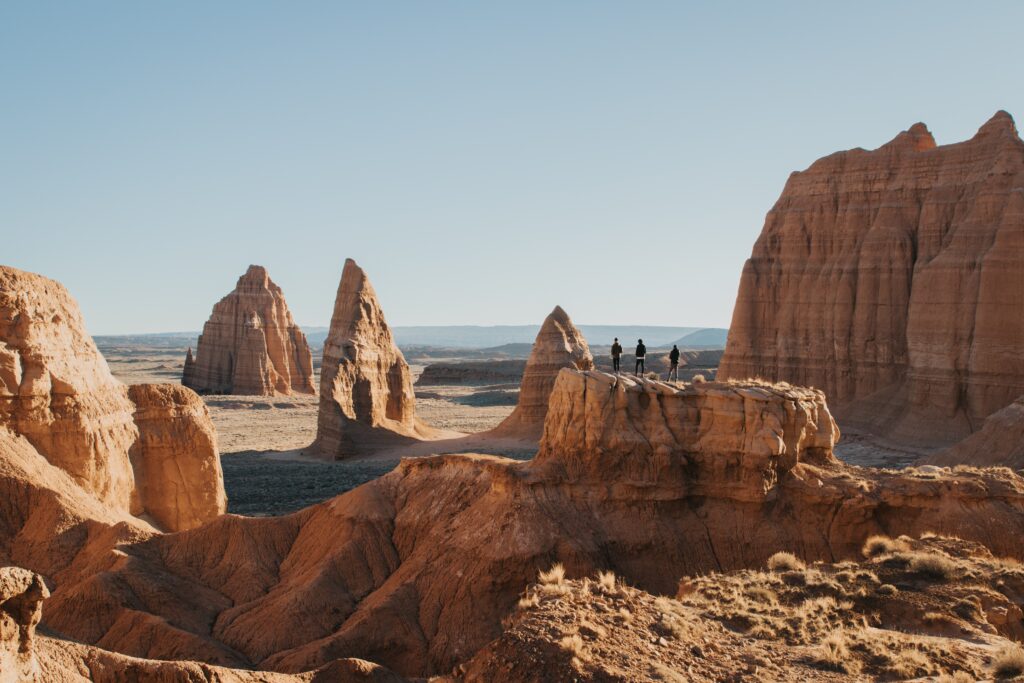
While Capitol Reef’s fall foliage steals the spotlight, this season also reveals some lesser-known treasures waiting to be discovered. Venture beyond the colorful canopy and immerse yourself in the park’s hidden gems:
Petroglyph Panels: Tucked away in various corners of the park, ancient petroglyphs offer a glimpse into the rich history of the Fremont and ancestral Puebloan peoples who once inhabited these lands. Fall is an ideal time to explore these rock art sites, as the cooler temperatures make hiking more enjoyable. The Capitol Reef Petroglyphs, accessible via short trails, boast intricate carvings etched into the sandstone, telling stories that have endured for centuries.
Cathedral Valley: For a true off-the-beaten-path adventure, journey to Cathedral Valley. Located in the northern reaches of the park, this remote area is a hidden wonderland of monolithic stone structures. The Crown Jewels, a collection of massive sandstone monoliths, gleam in the autumn sun. Accessible via a rugged but rewarding loop road, Cathedral Valley provides a sense of isolation and serenity that’s hard to find elsewhere in the park.
Pleasant Creek: In the heart of Capitol Reef, Pleasant Creek meanders through a narrow, colorful canyon. While not entirely hidden, this spot often remains less crowded compared to other park attractions. A hike along the Pleasant Creek Trail offers a chance to admire the vibrant fall foliage while listening to the gentle babble of the creek. Towering cliffs, dappled with sunlight and shadow, create a mesmerizing backdrop for your adventure.
The Tanks: Nestled in the Waterpocket Fold, a geologic wrinkle in the Earth’s crust, The Tanks are a unique series of natural potholes formed in the sandstone. They collect rainwater and provide a vital source of hydration for wildlife in the desert. The short but captivating hike to The Tanks leads you through enchanting canyons adorned with autumnal colors, making it an excellent choice for a fall outing.
Capitol Reef Camping in Fall: Cozy Nights Under the Stars
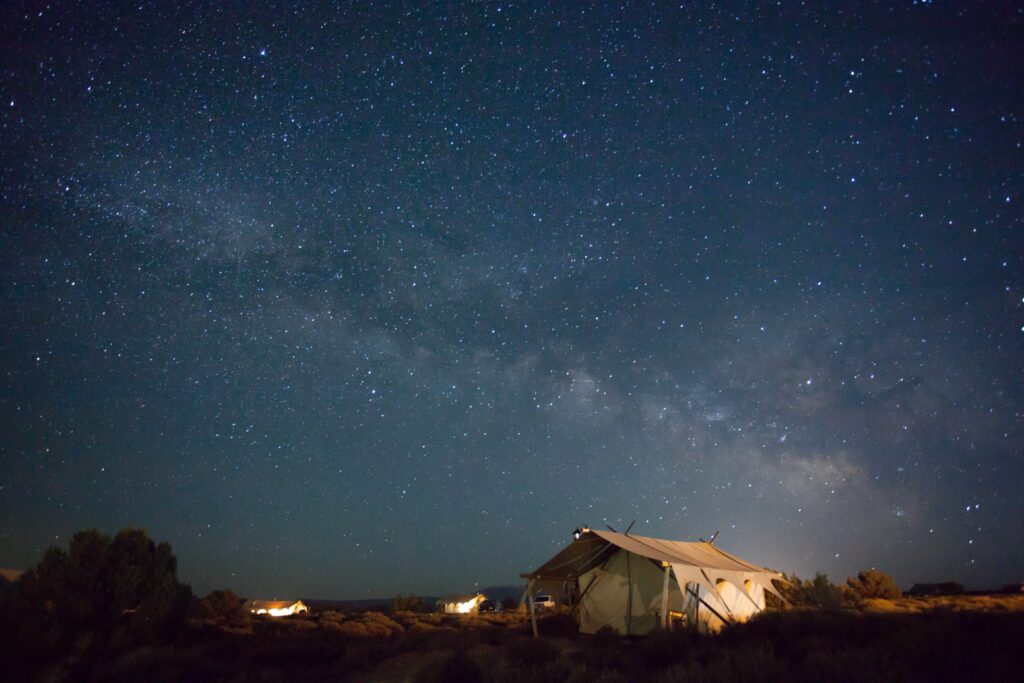
Camping in Capitol Reef during the fall is a magical experience. The park offers several campgrounds, some of which remain open well into the autumn season, allowing you to relish the crisp desert air and stargaze under Utah’s famously clear skies.
Fruita Campground: Located in the heart of Capitol Reef, Fruita Campground is the most popular and often stays open through October. Surrounded by the vibrant colors of fall foliage, this campground offers a unique blend of convenience and natural beauty. You’ll find amenities like picnic tables, flush toilets, and drinking water, ensuring a comfortable stay. Under the dark desert skies, Fruita is also an excellent spot for stargazing. As the temperature drops in the evening, cozy up to a crackling campfire and enjoy the serenity of the park.
Cathedral Valley Campground: If you’re looking for a more secluded camping experience, Cathedral Valley Campground in the northern part of the park might be the perfect choice. Although it has fewer amenities than Fruita, the trade-off is solitude and the opportunity to immerse yourself in the quiet beauty of the desert. You’ll likely find a sense of tranquility that’s hard to come by in more crowded areas. And when the sun sets, the lack of light pollution makes for exceptional stargazing. Bring your telescope or simply lay back and admire the Milky Way stretching across the vast desert sky.
Starry Nights: Fall nights in Capitol Reef are a stargazer’s dream. With lower humidity and cooler temperatures, the air becomes incredibly clear, offering unrivaled visibility of celestial wonders. The park’s remote location away from major cities means minimal light pollution, providing optimal conditions for observing stars, planets, and meteor showers. Consider joining a ranger-led stargazing program for expert insights into the cosmos. Whether you’re an amateur astronomer or simply appreciate the beauty of a starlit night, Capitol Reef’s autumn skies are a sight to behold.
Reservation Tips: It’s advisable to make campground reservations, especially if you plan to visit during the peak fall season. Fruita Campground, in particular, tends to fill up quickly. Check the National Park Service’s website for reservation information and availability. Remember that camping in Capitol Reef is a unique opportunity to connect with nature, and during the fall, it’s a chance to witness the park’s remarkable transformation under the golden hues of autumn. So, pack your camping gear, prepare for cool evenings, and get ready for unforgettable nights under the desert stars.
A Taste of Fall: Fruita’s Orchard Bounty
Fall in Capitol Reef isn’t just about vibrant foliage and stunning landscapes; it’s also a season of delicious harvests. In the heart of the park lies the historic Fruita District, where you can savor the flavors of autumn as you explore the orchards bursting with ripe fruit.
Fruit-Picking Fun: One of the most unique experiences in Capitol Reef during the fall is fruit picking. The Fruita orchards are home to a variety of fruit trees, including apple, pear, peach, cherry, and apricot. As the temperature drops and the leaves turn, these trees bear fruit that’s ripe for picking. Visitors are encouraged to pluck their own fruit straight from the trees, creating a connection with the land and its bountiful offerings. Imagine biting into a crisp apple or enjoying a juicy pear while surrounded by the stunning red rock scenery.
Scenic Picnicking: There’s no better way to appreciate the fall harvest than by enjoying a picnic in the orchards. Capitol Reef provides picnic areas amid the lush fruit trees, making it a serene spot for a meal. Spread out a blanket, savor freshly picked fruit, and soak in the breathtaking surroundings. The orchards’ peaceful ambiance, coupled with the aroma of ripe fruit, creates a sensory experience like no other.
Homemade Treats: If you’re not up for fruit picking or picnicking, don’t worry; you can still relish the orchard’s bounty. Visit the Gifford House, a historic farmhouse turned bakery and gift shop. Here, you can savor homemade pies, jams, and other delectable treats made with the very fruit grown in Fruita’s orchards. It’s a delightful way to taste the essence of fall and take home a sweet souvenir.
Fall Festivities: Capitol Reef often hosts special events during the fall season. The Heritage Star Party, typically held in October, combines stargazing with traditional apple cider pressing. Join in the festivities and enjoy freshly pressed cider while gazing at the wonders of the night sky. It’s an enchanting blend of nature and culture that captures the spirit of Capitol Reef in the fall.
Beating the Crowds: Fall’s Serene Ambiance
Capitol Reef National Park boasts a unique crowd pattern compared to some of its neighboring parks. While Zion and Arches often face peak visitation during the summer, Capitol Reef sees its busiest times in the spring (March to June) and the fall (September to October). The silver lining? Even at its busiest, Capitol Reef doesn’t come close to the overwhelming crowds experienced at Zion or Arches during their peak seasons.
However, it’s wise to be prepared, especially if you’re planning to visit on a weekend when the weather is pleasant, or when the fall foliage is at its most captivating. Certain parking lots within the park can fill up quickly during these periods. To savor the tranquility of Capitol Reef with fewer fellow explorers, consider scheduling your visit for a weekday. If the weekend is your only option, aim to arrive at the park early in the day to secure your preferred parking spot. As the late afternoon transitions into early evening, the crowds often disperse, presenting an excellent opportunity to embark on some shorter hikes or enjoy the park’s serene ambiance.
Cougar Ridge provides a strategic advantage for visitors hoping to stay one step ahead of the crowds. Situated just a short drive from Capitol Reef, it offers easy access for early birds eager to explore the park before the masses arrive each day. This proximity allows you to make the most of your visit, ensuring that you can relish the park’s natural wonders without feeling rushed or crowded by fellow adventurers.
Planning Your Fall Escape: A Capitol Reef Itinerary
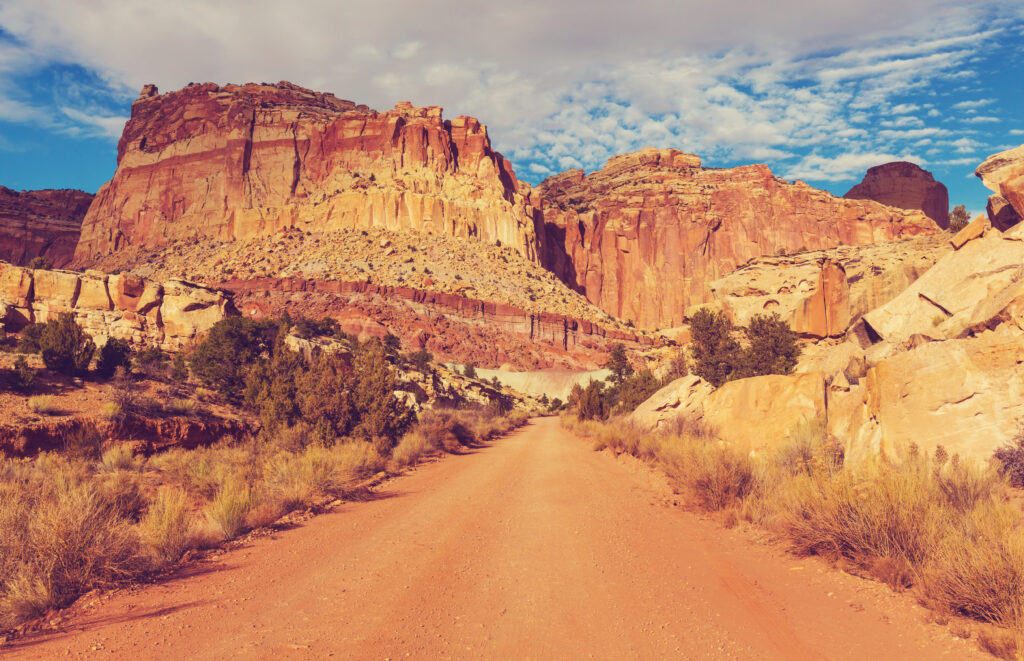
You’ve heard the whispers of fall in Capitol Reef, and you’re eager to embark on a captivating journey amidst the brilliant foliage and rugged landscapes. Here, we’ve crafted a sample itinerary to ensure you make the most of your autumn escape in Capitol Reef National Park.
Day 1: Arrival & Introduction
- Begin your journey by arriving in Capitol Reef and settling into your chosen lodging, whether it’s one of the park’s campgrounds, a cozy cabin, or a nearby hotel like Cougar Ridge.
- After getting your bearings, make your way to the Capitol Reef Visitor Center to gather information, maps, and perhaps even some insider tips from the park rangers.
- In the evening, enjoy a relaxing stroll around Fruita, the historic heart of the park, where you can take in the warm, welcoming atmosphere as you anticipate the adventures ahead.
Day 2: Scenic Drives & Petroglyphs
- Start the day with a scenic drive along the famous Capitol Reef Scenic Drive, which offers sweeping vistas of the park’s colorful cliffs and canyons. Don’t forget your camera!
- Explore Capitol Gorge and its remarkable petroglyph panels, offering a glimpse into the ancient cultures that once thrived in this arid landscape.
- In the afternoon, drive along the Grand Wash Road, a hidden gem, and marvel at the sheer scale of the cliffs that surround you.
- End the day with a visit to the Goosenecks Overlook, where you can witness the mesmerizing sunset casting its golden glow upon the Waterpocket Fold.
Day 3: Hiking Amidst Fall Foliage
- Lace up your hiking boots for an adventure on one of Capitol Reef’s scenic trails. The Cohab Canyon Trail, with its colorful rock formations and sweeping vistas, is an excellent choice.
- After lunch, tackle the Chimney Rock Loop, where you’ll be rewarded with panoramic views of the surrounding landscape and the striking red rock formations.
- Continue your exploration with a visit to the Freemont Petroglyphs, a fascinating testament to the area’s rich history.
- As the day winds down, take a leisurely stroll through the Fruita Orchards, where you can sample some of the ripe, delicious fruit that grows here. Don’t forget to pick up some homemade pies or jams at the Gifford Homestead!
Day 4: Delving into the Backcountry
- For an off-the-beaten-path experience, embark on the Halls Creek Narrows Trail, a challenging but rewarding adventure that takes you through a stunning slot canyon.
- Enjoy a picnic lunch amidst the solitude of the backcountry, savoring the serene ambiance that only Capitol Reef can provide.
- Spend the afternoon exploring more hidden gems, like the Upper Muley Twist Canyon, which offers a fascinating journey through narrow canyons and open vistas.
- As night falls, head back to Fruita for a hearty meal and perhaps some stargazing, weather permitting, in one of the park’s designated stargazing areas.
Day 5: A Fond Farewell
- On your final day in Capitol Reef, consider a visit to the Capitol Reef Field Station, where you can learn more about ongoing research and conservation efforts in the park.
- Before departing, take a short walk to Sunset Point for a last glimpse of the park’s striking landscapes, bathed in the soft, golden light of morning.
This itinerary offers a delightful taste of the wonders that await you in Capitol Reef during the fall season. However, feel free to adapt it to your preferences and explore additional trails and viewpoints that pique your interest. Capitol Reef National Park promises an unforgettable adventure, where each corner reveals a new facet of its mesmerizing beauty.
Top Books for Capitol Reef National Park
Capitol Reef National Park: The Complete Hiking and Touring Guide
This comprehensive guidebook offers an all-encompassing view of Capitol Reef National Park, catering to various interests and skill levels. It’s the only complete guide you need, whether exploring on foot or from the road. The book thoughtfully includes easy hikes for families, moderate day-hikes for the experienced, and challenging canyoneering options for adventurers. It also covers scenic drives, both on paved and rugged dirt roads, ensuring a full experience of the park’s beauty. Beyond just routes and trails, the guide provides valuable information on the park’s weather, climate, flora and fauna, as well as insights into the Fremont culture and the history of Fruita. This guidebook is a must-have for both first-time visitors and regulars, ensuring a safe and enjoyable journey through Capitol Reef National Park.
The Capitol Reef Reader
“The Capitol Reef Reader” is a remarkable collection that brings together 160 years of writing about Utah’s Capitol Reef National Park, curated by the award-winning author and photographer Stephen Trimble. This anthology features nearly fifty writers, including the foundational figures of Colorado Plateau literature like Clarence Dutton, Wallace Stegner, and Edward Abbey. Each piece in the book captures a unique aspect of the park’s story, offering personal narratives, philosophical insights, and historical and scientific accounts. Trimble not only collects these writings but also provides valuable commentary and context, making the book a comprehensive guide to understanding Capitol Reef. The reader’s experience is further enriched by a visual survey of the park, featuring nearly 100 photographs. These include historic photos, images from Trimble’s extensive hikes in the park, and works from other master visual artists. This book stands out as an unparalleled tribute to Capitol Reef, capturing its essence like no other.

